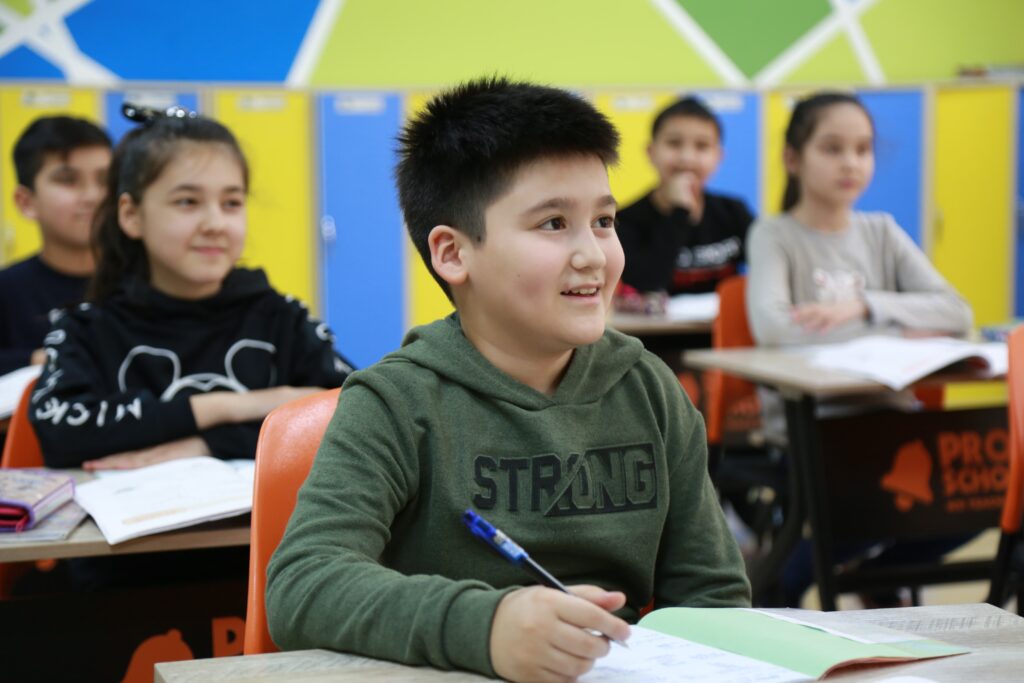In India, primary education is compulsory for all children between the ages of six and fourteen. However, many children do not have access to quality primary education, especially in rural areas.
The primary school system in India is divided into three stages:
- Lower Primary (Grade I to Grade III),
- Upper Primary (Grade IV to Grade VII)
- High School or Secondary School (Grade VIII to XII).
In most states, children aged six to eleven years old attend primary school.
The quality of primary education in India varies greatly from state to state and even within states. There are many government schools that offer free education but the quality of teaching and learning is often poor.
Private schools, on the other hand, charge tuition fees but usually provide better quality education.
If you are looking for a good primary school in Noida, then The Manthan School could be a good choice for you and your child.
Types Of Primary Schools In India
There are different types of primary schools in India. Some are publicly run and some are privately run. Besides mainstream primary schools, there are also special schools for primary education and schools for special education.
The Indian education system is divided into four main types of primary schools:
- Public primary schools
- Private primary schools
- Special primary schools
- Schools for special education
Publicly run schools are government-funded and managed. They usually have a more diverse curriculum, which includes religious studies.
Privately run schools are funded by tuition fees paid by the students’ parents or guardians. They typically offer a narrower range of subjects and may be affiliated with a particular religion or ideology.
There are also special schools for primary education, which cater to students with special needs. These schools may be public or private. Schools for special education are specifically designed to meet the needs of students with disabilities.
No matter what type of primary school you choose, your child will receive a quality education that will prepare them for the next stage of their life.
Primary School Admissions
When it comes to enrolling their child in primary school, parents have a lot of choices in India. Parents can choose between mainstream state-run schools and private schools. They can also select from public or private schools that offer specific curricula, like CBSE, ICSE, or IB.
There are a few things to keep in mind when choosing a primary school for your child. These include the school’s location (for that, you just search schools near me or best play school near me on Google to find schools near you.
Its reputation, the quality of teaching staff, and the facilities on offer. You should also consider whether the school’s curriculum and values align with your own.
Making the decision about which primary school to send your child to is an important one. But with so many different types of primary schools available in India, you’re sure to find one that’s right for your family.
Primary School Curriculum
The primary school curriculum in India is broadly divided into three categories:
- Compulsory
- Optional
- Special
The compulsory subjects are Hindi, English, and Mathematics.
Other subjects that students may study include Social Studies, Science, Environmental Education, Art & Crafts, Physical Education, and Computer Literacy.
Schools have a lot of discretion over the optional subjects that they offer. This could include things like music, dance, drama, foreign languages, and religious education. Some schools also offer vocational training in areas like cooking, carpentry, or tailoring.
There are a number of special schools with special curriculum for primary students in India. These schools cater to students with different needs, such as the deaf, blind, or those with learning disabilities. There are also special schools for students from tribal communities and disadvantaged backgrounds.
Cost Of Admission In Primary Schools
The cost of admission in primary schools varies depending on the type of school. In publicly run primary schools, there is no tuition fee, but parents have to pay for other expenses such as uniforms and textbooks.
Private schools, on the other hand, charge a tuition fee which can be quite expensive. Some private schools also require parents to purchase uniforms and textbooks from the school.
Special schools for primary education may also charge a tuition fee, but it is usually lower than that of private schools. Schools for special education usually do not charge a tuition fee.
In India, primary education is compulsory for all children between the ages of six and fourteen. However, many children do not have access to quality primary education, especially in rural areas. There is a lot of disparity in the quality of education available in different parts of the country. The government has been making efforts to improve access to primary education, but there is still a lot more that needs to be done.
Conclusion
There are many different types of primary schools available in India. The cost of admission and the quality of education varies depending on the type of school. Primary education is compulsory for all children in India, but there is still a lot of work to be done to improve access to quality primary education.
So, what’s the best way to choose a primary school for your child? It depends on your priorities and what you are looking for in a school.
If you want your child to have an international education with exposure to different cultures, then an IB or private school may be the right choice. If you prioritize academics, check out the rankings of local schools and see which one has the best program for your child’s needs.
And finally, don’t forget about fit – make sure that the school is a good match for both you and your child.
Let us know in the comments below how you decided on a primary school for your little one!
